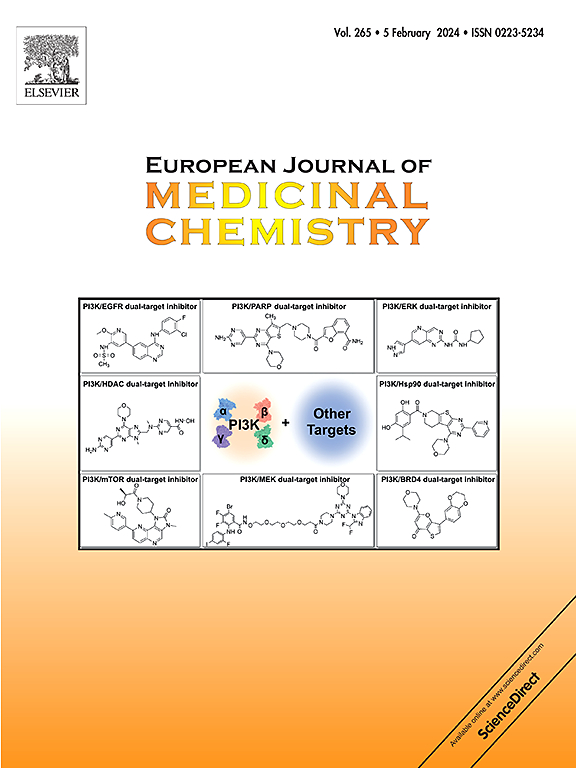Aromatic group-induced self-assembly of short antimicrobial peptides: unveiling exceptionally potent antimicrobial efficacy
IF 6
2区 医学
Q1 CHEMISTRY, MEDICINAL
引用次数: 0
Abstract
Self-assembled antimicrobial peptides (AMPs) have superior antimicrobial properties from their supramolecular nanostructures. A systematic study is needed to determine which AMPs can generate more significant self-assembled structures for antimicrobial activity. In this study, thirty-six self-assembled AMPs were systematically designed by combining six hexapeptide sequences with five aromatic groups, exploring the contributions of different sequences and groups to self-assembly and antimicrobial properties. Most peptides had broad-spectrum antimicrobial and self-assembly capabilities. Moderate self-assembly can endow these new AMPs with excellent antimicrobial properties. Candidate peptides Nap-f5f6 and Npx-f5f6 had outstanding antimicrobial activity, low toxicity, and high selectivity. This may be due to their self-assembly into nanofibers and nanospheres via π-π stacking provided by C- and N-terminal aromatic groups. Their membrane-disrupting bactericidal mechanism gives a rapid effect and prevents antibiotic resistance. Also, in infected mouse skin wounds, Nap-f5f6 and Npx-f5f6 had low toxicity, reduced bacterial load, and accelerated wound healing.


芳香基团诱导的短抗菌肽自组装:揭示异常强大的抗菌功效
自组装抗菌肽(AMPs)由于其超分子纳米结构而具有优异的抗菌性能。需要一个系统的研究来确定哪些amp可以产生更显著的自组装结构的抗菌活性。本研究通过将6个六肽序列与5个芳香基团组合,系统地设计了36个自组装抗菌肽,探索了不同序列和基团对自组装和抗菌性能的贡献。大多数肽具有广谱抗菌和自组装能力。适度的自组装使这些新型抗菌肽具有优异的抗菌性能。候选肽Nap-f5f6和Npx-f5f6具有较强的抗菌活性、低毒性和高选择性。这可能是由于它们通过C端和n端芳香族基团提供的π-π堆叠自组装成纳米纤维和纳米球。它们的破膜杀菌机制能迅速起效并防止抗生素耐药性。此外,在感染的小鼠皮肤伤口中,Nap-f5f6和Npx-f5f6具有低毒性、减少细菌负荷和加速伤口愈合的作用。
本文章由计算机程序翻译,如有差异,请以英文原文为准。
求助全文
约1分钟内获得全文
求助全文
来源期刊
CiteScore
11.70
自引率
9.00%
发文量
863
审稿时长
29 days
期刊介绍:
The European Journal of Medicinal Chemistry is a global journal that publishes studies on all aspects of medicinal chemistry. It provides a medium for publication of original papers and also welcomes critical review papers.
A typical paper would report on the organic synthesis, characterization and pharmacological evaluation of compounds. Other topics of interest are drug design, QSAR, molecular modeling, drug-receptor interactions, molecular aspects of drug metabolism, prodrug synthesis and drug targeting. The journal expects manuscripts to present the rational for a study, provide insight into the design of compounds or understanding of mechanism, or clarify the targets.

 求助内容:
求助内容: 应助结果提醒方式:
应助结果提醒方式:


